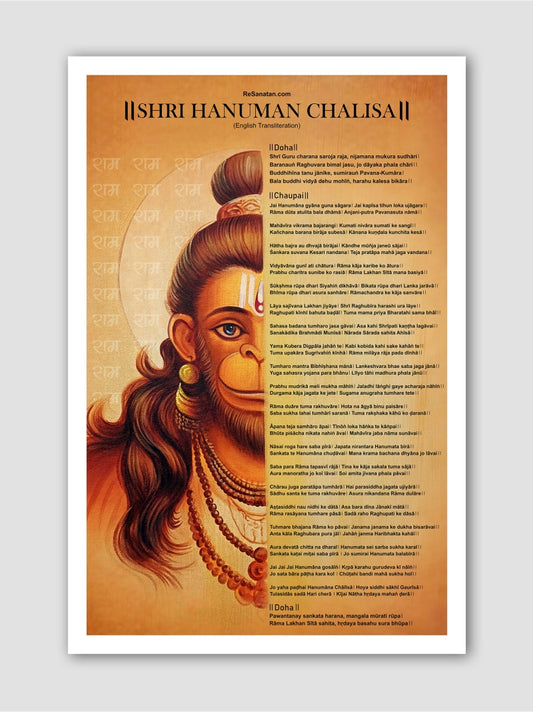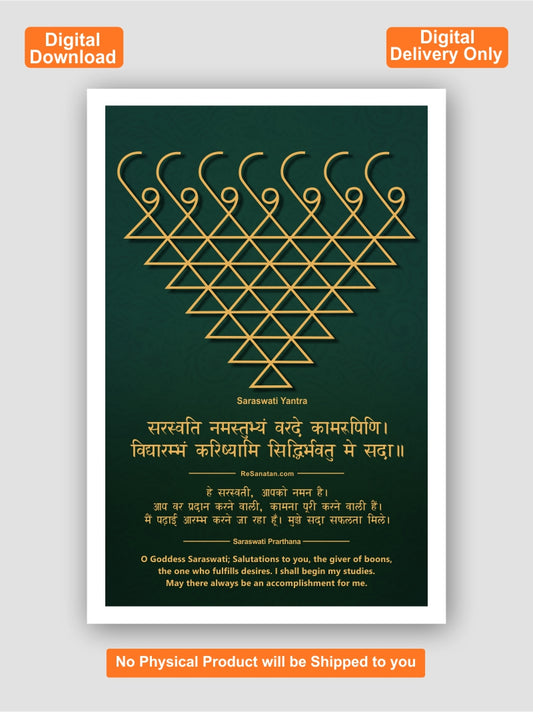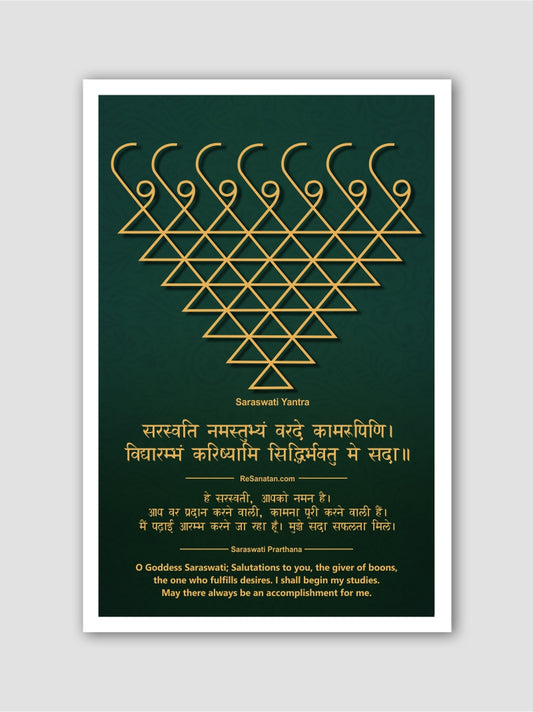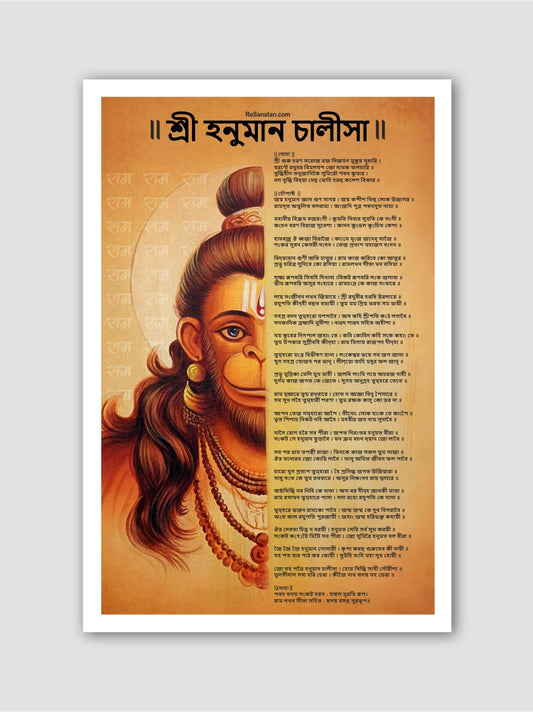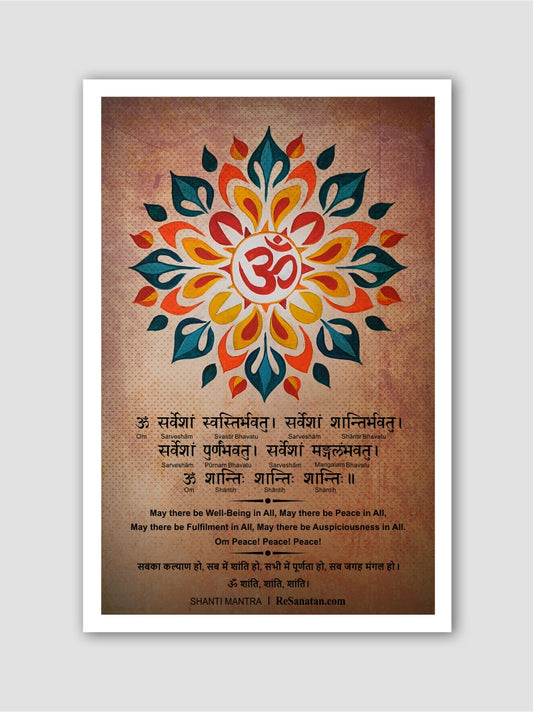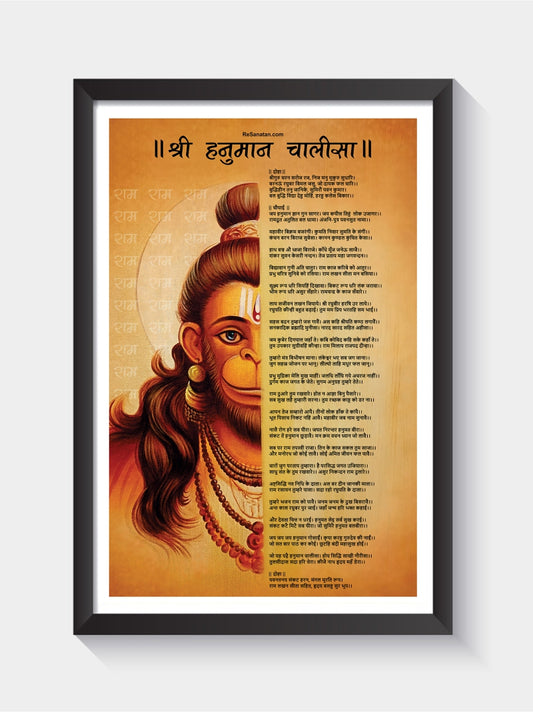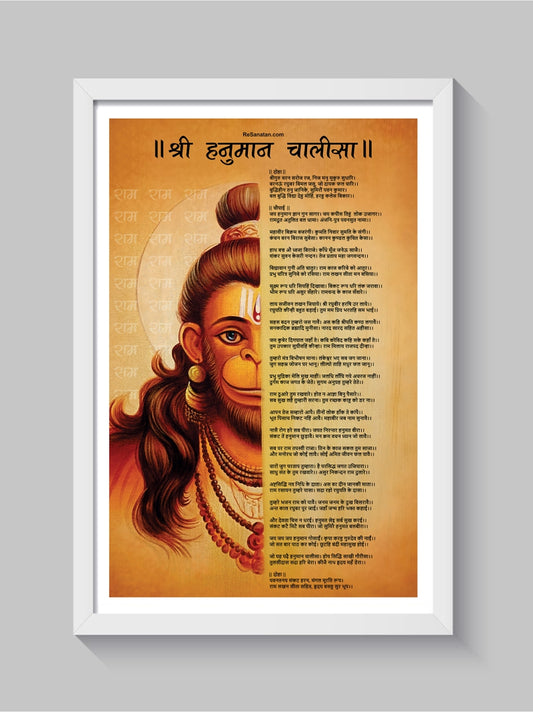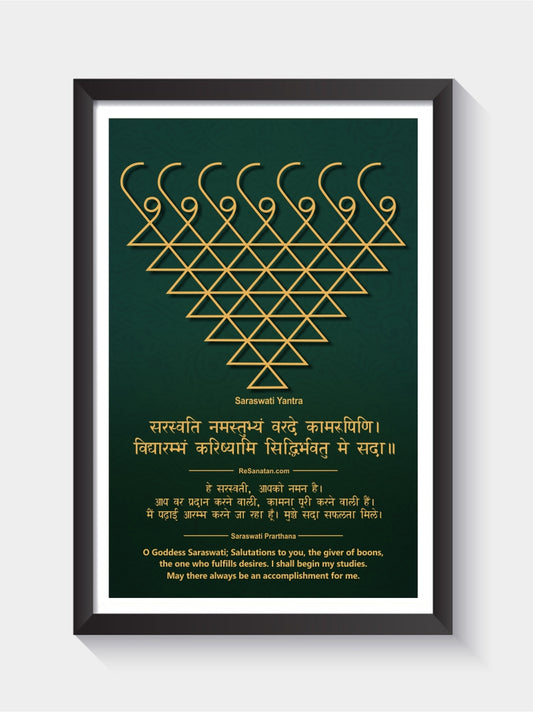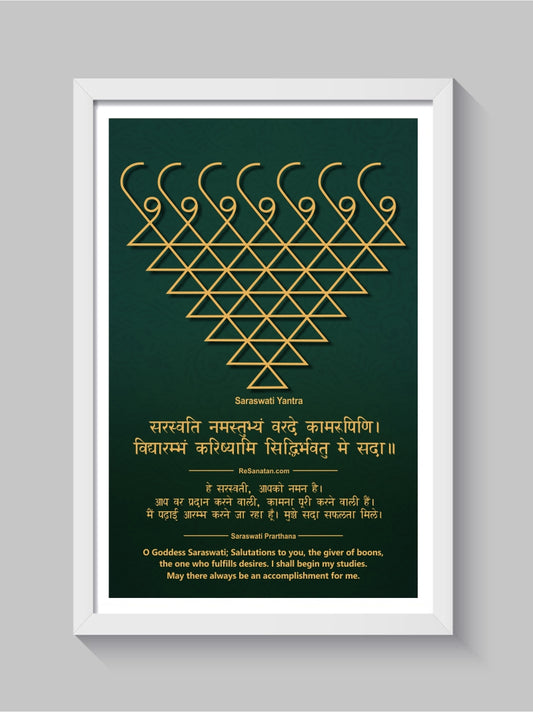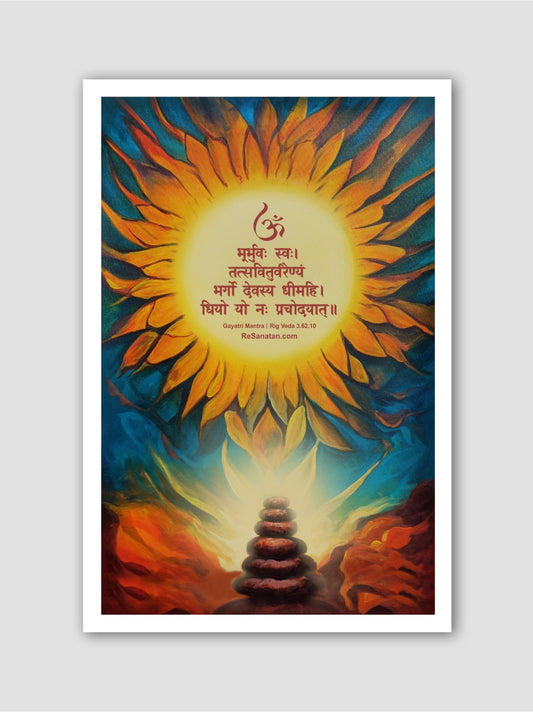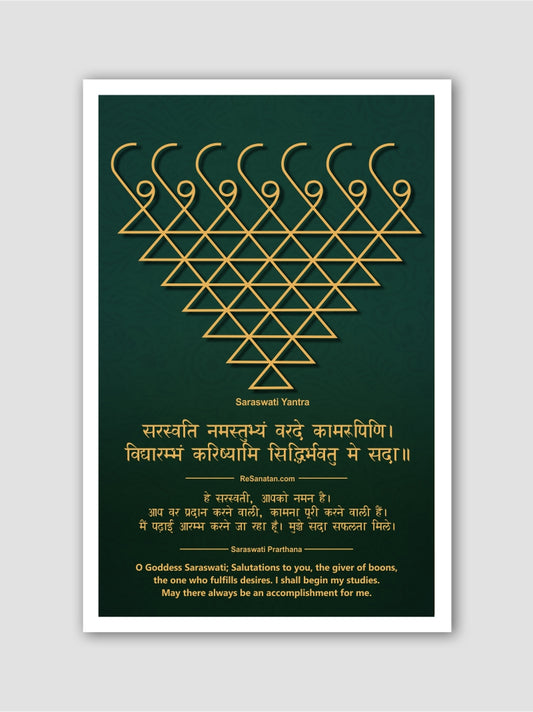Sanatan Dharma and Science: Exploring the Intersections Between Ancient Hindu Wisdom and Modern Scientific Discoveries
Share
Sanatan Dharma, often referred to as Hinduism, is one of the oldest continuous religions in the world. Rooted in timeless principles and practices, it has always emphasized the harmony between spirituality and the natural world. Interestingly, many aspects of ancient Hindu wisdom resonate with modern scientific discoveries, revealing a fascinating intersection between these two realms. This article explores some key areas where Sanatan Dharma and contemporary science converge, shedding light on the profound insights offered by both.

1. Cosmology and the Universe: Intersections Between Ancient Hindu Wisdom and Modern Scientific Discoveries
Cosmology, the study of the origin, evolution, and eventual fate of the universe, has fascinated human beings for millennia. Both ancient Hindu wisdom and modern scientific discoveries have sought to unravel the mysteries of the cosmos. Remarkably, many concepts found in Hindu cosmology resonate with contemporary scientific theories, demonstrating a profound understanding of the universe's workings long before the advent of modern science.
Ancient Hindu Cosmology
Vedic Cosmology
The Rig Veda, one of the oldest known texts, provides a comprehensive cosmological framework. It describes the universe's creation, existence, and dissolution in cycles, reflecting a sophisticated understanding of cosmic dynamics.
Nasadiya Sukta (Hymn of Creation): This hymn from the Rig Veda contemplates the origins of the universe, suggesting that creation emerged from a primordial, undifferentiated state, akin to the concept of a singularity before the Big Bang.
Cyclic Nature of the Universe: Hindu cosmology introduces the idea of time as cyclical, marked by vast periods known as Yugas. These cycles encompass creation (Srishti), preservation (Sthiti), and destruction (Pralaya), implying an eternal process of cosmic rebirth.
Brahmanda (Cosmic Egg): The concept of Brahmanda or the Cosmic Egg describes the universe's origin from a golden egg, symbolizing the emergence of order from chaos, paralleling modern notions of cosmic inflation.
Purana and Itihasa
Later texts, such as the Puranas and Itihasas (epics like the Mahabharata and Ramayana), provide more elaborate cosmological details:
Mount Meru and the Universe: These texts describe Mount Meru as the central axis of the universe, surrounded by various realms (lokas). This symbolic representation emphasizes the interconnectedness of all existence.
Kalpa (Cosmic Day): The Puranas introduce the concept of a Kalpa, a cosmic day of Brahma, lasting 4.32 billion years. This periodization aligns intriguingly with the scientific understanding of geological and astronomical timescales.
Modern Scientific Cosmology
The Big Bang Theory
The prevailing scientific model for the universe's origin is the Big Bang Theory, proposing that the universe began approximately 13.8 billion years ago from an extremely hot and dense state.
Singularity and Inflation: At the moment of the Big Bang, the universe existed as a singularity, rapidly expanding in a process called cosmic inflation. This idea of an initial, infinitely dense point aligns with Hindu descriptions of a primordial, undifferentiated state.
Cosmic Microwave Background Radiation: The discovery of the cosmic microwave background radiation provides evidence for the Big Bang, analogous to the residual energy mentioned in ancient texts that pervades the universe.
The Cyclic Model of the Universe
Some modern cosmological theories suggest a cyclic model, where the universe undergoes endless cycles of expansion and contraction, known as the Big Crunch and Big Bounce.
Big Crunch and Big Bounce: According to this model, the universe may eventually stop expanding, collapse back into a high-density state, and then undergo another Big Bang. This concept mirrors the Hindu idea of cosmic cycles (Yugas) and periodic dissolution (Pralaya).
Multiverse Theory
The multiverse theory posits that our universe is just one of many potentially infinite universes, each with its own physical laws and constants.
Infinite Realms: Hindu cosmology's description of multiple realms (lokas) with different attributes resonates with the multiverse concept, suggesting an ancient intuition of a complex and diverse cosmic structure.
Parallels Between Hindu Cosmology and Modern Science
Creation Myths and Scientific Theories
Primordial State: Both the Nasadiya Sukta and the Big Bang Theory describe the universe emerging from a primordial, undifferentiated state. The concept of creation from a singularity or a cosmic egg reflects a deep understanding of cosmic origins.
Cyclic Time: Hindu cosmology's cyclic nature, with its cycles of creation, preservation, and destruction, parallels scientific models like the Big Bounce, which propose an eternal sequence of cosmic rebirths.
Time and Scale
Cosmic Timescales: The Hindu notion of a Kalpa, spanning billions of years, aligns closely with geological and astronomical timescales, demonstrating an advanced grasp of the vast temporal dimensions of the universe.
Eternal Universe: Both Hindu texts and some scientific theories propose an eternal universe, either through endless cycles or a multiverse, challenging the linear conception of time prevalent in many other traditions.
Metaphysical and Physical Realms
Multiple Realms: The Hindu cosmological model's multiple realms (lokas) correspond to the multiverse theory's many universes, each with distinct properties, highlighting an ancient insight into the complexity and diversity of existence.
Unity and Diversity: Hindu cosmology's emphasis on the interconnectedness of all realms and beings parallels the scientific understanding of a unified yet diverse cosmos, interconnected by fundamental forces and particles.
The intersections between ancient Hindu cosmology and modern scientific discoveries reveal a remarkable convergence of thought. Hindu sages, through spiritual insight and contemplation, developed sophisticated cosmological models that resonate with contemporary scientific theories. This synergy not only underscores the timeless relevance of Hindu wisdom but also highlights the potential for a harmonious dialogue between science and spirituality. By exploring these intersections, we gain a deeper appreciation of the universe's mysteries and our place within its vast expanse.
2. Atomic Theory: Bridging Ancient Hindu Wisdom and Modern Scientific Discoveries
The concept of atoms as fundamental building blocks of matter is a cornerstone of modern science. However, this idea was not solely the product of modern scientific inquiry; it has deep roots in ancient philosophical and spiritual traditions, including those of ancient Hinduism. Hindu sages developed sophisticated theories about the nature of matter and its fundamental components long before the advent of modern atomic theory. This article explores the ancient Hindu atomic theory and its striking parallels with contemporary scientific understanding.
Ancient Hindu Atomic Theory
Vaisheshika School of Philosophy
The Vaisheshika school, founded by the sage Maharishi Kanada around the 6th century BCE, is one of the earliest known systems to propose an atomic theory. This school of thought, along with the Nyaya school, laid the foundation for a detailed and structured approach to understanding the nature of the physical world.
Anu (Atom) and Paramanu (Subatomic Particle): According to Vaisheshika philosophy, all matter is composed of indivisible and indestructible particles called "anu." These anu are further subdivided into even smaller particles called "paramanu," akin to modern subatomic particles.
Characteristics of Anu: The anu are described as eternal, imperceptible, and capable of combining in various ways to form different types of matter. This concept closely parallels the modern understanding of atoms and their ability to bond and form molecules.
Types of Anu: Maharishi Kanada identified several types of anu corresponding to the classical elements—earth, water, fire, air, and ether (akasha). Each type of anu possesses distinct properties and qualities that define the characteristics of the matter they constitute.
Nyaya School of Philosophy
The Nyaya school, founded by Gautama, complements the Vaisheshika school in its philosophical inquiry into the nature of reality. Nyaya philosophy also supports the atomic theory and delves into the logical and epistemological aspects of understanding atoms and their interactions.
Perception and Inference: Nyaya philosophy emphasizes that knowledge of atoms can be gained through both perception (pratyaksha) and inference (anumana). This dual approach aligns with the scientific method of observation and hypothesis.
Modern Scientific Atomic Theory
Development of Modern Atomic Theory
Modern atomic theory has evolved through the contributions of numerous scientists over centuries. Key milestones include:
John Dalton (1803): Dalton proposed that all matter is made up of tiny, indivisible particles called atoms, each with a specific mass and properties. This idea laid the groundwork for modern atomic theory.
J.J. Thomson (1897): Thomson's discovery of the electron revealed that atoms are not indivisible but contain smaller charged particles. This discovery led to the plum pudding model of the atom.
Ernest Rutherford (1911): Rutherford's gold foil experiment demonstrated that atoms have a small, dense nucleus surrounded by a cloud of electrons, leading to the nuclear model of the atom.
Niels Bohr (1913): Bohr's model introduced the idea of quantized electron orbits, explaining atomic spectra and stability.
Quantum Mechanics (1920s onward): The development of quantum mechanics by scientists like Schrödinger, Heisenberg, and Dirac provided a comprehensive framework for understanding atomic structure and behavior at the subatomic level.
Structure of the Atom
Modern atomic theory describes the atom as consisting of three primary subatomic particles:
Protons: Positively charged particles located in the nucleus.
Neutrons: Neutral particles also located in the nucleus.
Electrons: Negatively charged particles orbiting the nucleus in defined energy levels or clouds.
Parallels Between Hindu Atomic Theory and Modern Science
Fundamental Particles
Anu and Atoms: The Hindu concept of anu as the smallest indivisible particles of matter corresponds to the modern notion of atoms. Both theories recognize these particles as the building blocks of the physical world.
Paramanu and Subatomic Particles: The idea of paramanu as even smaller constituents of anu mirrors the discovery of subatomic particles (protons, neutrons, and electrons) within atoms.
Indestructibility and Eternality
Eternal Nature: Hindu atomic theory posits that anu are eternal and indestructible, aligning with the modern scientific understanding that atoms are stable and persist over time, undergoing transformations but not annihilation.
Combinations and Properties
Combination of Atoms: Both Hindu and modern atomic theories emphasize the ability of fundamental particles to combine and form various types of matter. The Hindu notion of different types of anu forming diverse substances parallels the chemical bonding and molecular formation in modern chemistry.
Influence and Legacy
The profound insights of ancient Hindu atomic theory influenced not only Indian philosophical thought but also resonated with scholars and scientists across cultures and eras. The systematic approach to understanding matter and its properties laid a conceptual foundation that would later be mirrored and expanded upon by modern scientific inquiry.
The intersections between ancient Hindu atomic theory and modern scientific discoveries reveal a remarkable continuity of thought across millennia. The sophisticated understanding of matter articulated by ancient Hindu sages demonstrates the depth of their philosophical and scientific insights. By exploring these parallels, we not only appreciate the advanced nature of ancient Hindu wisdom but also recognize the enduring quest of humanity to unravel the fundamental nature of reality. This synthesis of ancient and modern perspectives enriches our understanding of the universe and our place within it.
3. Yoga and Mental Health: Ancient Practices for Modern Well-being
Yoga, an ancient practice originating in India, has gained immense popularity worldwide for its holistic approach to health and well-being. While often associated with physical postures (asanas), yoga encompasses a broad spectrum of practices, including breath control (pranayama), meditation (dhyana), and ethical principles (yamas and niyamas). These elements collectively contribute to mental health, offering profound benefits for managing stress, anxiety, depression, and overall mental well-being. This article delves into the relationship between yoga and mental health, exploring the scientific evidence supporting its efficacy and the ancient wisdom underlying these practices.
The Foundations of Yoga
Historical and Philosophical Context
Yoga's roots can be traced back to the ancient texts of Hinduism, such as the Vedas, Upanishads, and the Yoga Sutras of Patanjali. Patanjali’s Yoga Sutras, composed around 400 CE, provide a comprehensive framework for the practice and philosophy of yoga, outlining an eightfold path known as Ashtanga Yoga:
Yamas: Ethical guidelines, including non-violence (ahimsa) and truthfulness (satya).
Niyamas: Personal observances, such as cleanliness (saucha) and contentment (santosha).
Asanas: Physical postures designed to prepare the body for meditation.
Pranayama: Breath control techniques that regulate energy flow.
Pratyahara: Withdrawal of the senses to turn inward.
Dharana: Concentration or focused attention.
Dhyana: Meditation or sustained focus.
Samadhi: A state of transcendental consciousness and unity with the divine.
The Science of Yoga and Mental Health
Stress Reduction
One of the most well-documented benefits of yoga is its ability to reduce stress. Stress is a major contributor to numerous mental health issues, including anxiety and depression. Yoga's combination of physical movement, breath control, and mindfulness helps activate the parasympathetic nervous system, promoting relaxation and reducing the body's stress response.
Cortisol Reduction: Studies have shown that regular yoga practice can lower levels of cortisol, the primary stress hormone. This reduction in cortisol helps alleviate symptoms of chronic stress and anxiety.
Heart Rate Variability (HRV): Improved HRV, an indicator of the body's ability to adapt to stress, has been observed in individuals practicing yoga regularly. Higher HRV is associated with better emotional regulation and resilience to stress.
Anxiety and Depression
Yoga has been found to be particularly effective in managing symptoms of anxiety and depression. The meditative aspects of yoga, along with its emphasis on breath control, help calm the mind and reduce the physiological symptoms associated with these conditions.
GABA Levels: Research indicates that yoga increases levels of gamma-aminobutyric acid (GABA), a neurotransmitter that promotes relaxation and reduces anxiety. Low GABA levels are often associated with anxiety disorders and depression.
Mindfulness and Cognitive Function: Yoga enhances mindfulness, which is the practice of being present and fully engaged in the moment. Mindfulness-based stress reduction (MBSR) programs, which incorporate yoga, have been shown to improve cognitive function and emotional regulation, reducing symptoms of anxiety and depression.
Neuroplasticity and Brain Health
Regular yoga practice can induce neuroplastic changes in the brain, enhancing mental health and cognitive function. Neuroplasticity refers to the brain's ability to reorganize itself by forming new neural connections throughout life.
Prefrontal Cortex and Hippocampus: Yoga and meditation practices have been shown to increase the thickness of the prefrontal cortex, which is involved in decision-making and emotional regulation, and the hippocampus, which is critical for memory and learning. These changes contribute to improved mental health and cognitive resilience.
Amygdala: The amygdala, responsible for processing emotions like fear and anxiety, tends to shrink with regular meditation practice, leading to a reduction in stress and anxiety levels.
Specific Yoga Practices for Mental Health
Asanas (Physical Postures)
While all yoga postures can contribute to overall well-being, certain asanas are particularly beneficial for mental health:
Shavasana (Corpse Pose): This pose promotes deep relaxation and stress relief, often practiced at the end of a yoga session.
Balasana (Child’s Pose): A calming posture that helps release tension and promotes a sense of security and grounding.
Viparita Karani (Legs-Up-the-Wall Pose): Known for its restorative effects, this pose helps reduce anxiety and fatigue.
Pranayama (Breath Control)
Breath control practices are central to yoga and have significant impacts on mental health:
Nadi Shodhana (Alternate Nostril Breathing): Balances the nervous system and calms the mind, reducing anxiety.
Ujjayi Breath (Ocean Breath): Aids in concentration and promotes a meditative state.
Kapalabhati (Skull-Shining Breath): Energizes the mind and helps alleviate symptoms of depression.
Dhyana (Meditation)
Meditation is a core component of yoga that directly addresses mental health:
Mindfulness Meditation: Increases awareness and acceptance of the present moment, reducing symptoms of anxiety and depression.
Loving-Kindness Meditation (Metta): Promotes feelings of compassion and reduces negative emotions, enhancing overall emotional well-being.
Transcendental Meditation: Aims to transcend ordinary thinking and achieve a state of restful alertness, reducing stress and promoting mental clarity.
The ancient practice of yoga offers a comprehensive approach to mental health that is increasingly supported by modern scientific research. By integrating physical postures, breath control, and meditation, yoga addresses the multifaceted nature of mental well-being. The profound benefits of yoga for stress reduction, anxiety, depression, and overall brain health demonstrate the enduring relevance of this ancient practice in today's fast-paced world. As more people turn to yoga for mental health, the timeless wisdom of this practice continues to prove its value, fostering a holistic approach to wellness that bridges ancient traditions and modern science.
4. Ayurveda and Medicine: Ancient Wisdom for Modern Health
Ayurveda, often regarded as the "Science of Life," is one of the oldest holistic healing systems in the world, with roots in the ancient Vedic culture of India. This traditional system of medicine emphasizes the balance between mind, body, and spirit to achieve optimal health and well-being. Unlike modern Western medicine, which often focuses on treating symptoms, Ayurveda aims to address the root causes of illness through personalized, preventive, and holistic approaches. This article explores the foundational principles of Ayurveda, its practices, and its relevance in contemporary medicine.
The Foundations of Ayurveda
Historical Context
Ayurveda's origins can be traced back over 5,000 years to the Vedic texts, particularly the Rig Veda, Atharva Veda, and subsequent classical texts like the Charaka Samhita and Sushruta Samhita. These ancient scriptures provide a comprehensive guide to health, disease prevention, and treatment, encompassing a wide range of topics from surgery to herbal medicine.
Core Principles
Ayurveda is built on several core principles that guide its approach to health and healing:
1. The Five Elements (Panchamahabhutas):
Ether (Akasha)
Air (Vayu)
Fire (Agni)
Water (Jala)
Earth (Prithvi)
These elements combine in various ways to form the three doshas, or constitutional types, that govern physiological and psychological functions in the body.
2. The Three Doshas (Tridosha Theory):
Vata: Composed of air and ether, governing movement, circulation, and nerve impulses.
Pitta: Composed of fire and water, responsible for digestion, metabolism, and energy production.
Kapha: Composed of water and earth, providing structure, stability, and lubrication to the body.
Each person has a unique balance of these doshas, which determines their constitution (Prakriti) and health tendencies.
3. Dhatus (Tissues):
The body is made up of seven dhatus (tissues): Rasa (plasma), Rakta (blood), Mamsa (muscle), Meda (fat), Asthi (bone), Majja (marrow), and Shukra (reproductive tissue). Health is maintained by the proper functioning and nourishment of these tissues.
4. Agni (Digestive Fire):
Agni is the metabolic energy responsible for digestion and assimilation. Balanced agni leads to good health, while imbalanced agni can cause illness.
5. Malas (Waste Products):
The efficient elimination of waste products (malas) like urine, feces, and sweat is essential for maintaining health.
Ayurvedic Diagnostic Methods
Pulse Diagnosis (Nadi Pariksha)
Pulse diagnosis is a sophisticated method used to assess the balance of doshas, dhatus, and the overall state of health. An experienced Ayurvedic practitioner can detect subtle imbalances and potential health issues through the pulse.
Observation and Inquiry (Darshan, Sparshan, Prashna)
Ayurvedic diagnosis also involves observing physical characteristics, such as the tongue, eyes, and skin, and inquiring about the patient's lifestyle, diet, mental state, and symptoms.
Ayurvedic Treatments
Ayurveda employs a wide range of treatments tailored to the individual's constitution and specific health needs:
Herbal Medicine
Ayurveda utilizes thousands of medicinal plants and herbs to treat various ailments and promote health. Some commonly used herbs include:
Ashwagandha: Known for its adaptogenic properties, helping the body resist stress.
Turmeric: Renowned for its anti-inflammatory and antioxidant effects.
Tulsi (Holy Basil): Used for respiratory conditions and boosting immunity.
Panchakarma (Detoxification and Rejuvenation)
Panchakarma is a series of five therapeutic treatments aimed at detoxifying the body, eliminating toxins, and restoring balance. These treatments include:
Vamana (Therapeutic Vomiting): Removes toxins from the upper digestive tract.
Virechana (Purgation): Cleanses the bowels and removes toxins from the intestines.
Basti (Enema Therapy): Administers medicated enemas to cleanse the colon.
Nasya (Nasal Administration): Clears the sinuses and improves respiratory health.
Raktamokshana (Bloodletting): Removes impurities from the blood.
Diet and Nutrition (Ahara)
Ayurveda emphasizes the importance of a balanced diet tailored to one's dosha. Foods are classified based on their taste (rasa), potency (virya), and post-digestive effect (vipaka). A diet that balances the doshas is essential for maintaining health and preventing disease.
Lifestyle Practices (Vihara)
Ayurveda prescribes specific daily and seasonal routines to maintain harmony with natural rhythms. These practices include regular exercise, adequate sleep, meditation, and stress management techniques.
Relevance of Ayurveda in Modern Medicine
Integrative Approach
Ayurveda's holistic approach complements modern medicine by addressing the root causes of illness and promoting overall well-being. Integrative medicine combines the best of both worlds, offering personalized care that considers the physical, mental, and spiritual aspects of health.
Chronic Disease Management
Ayurveda has shown promise in managing chronic conditions such as diabetes, arthritis, cardiovascular diseases, and mental health disorders. Its emphasis on lifestyle modifications, diet, and natural remedies provides a sustainable approach to long-term health management.
Preventive Healthcare
Ayurveda's focus on preventive healthcare aligns with modern public health strategies. By emphasizing lifestyle, diet, and natural therapies, Ayurveda helps individuals maintain health and prevent disease, reducing the burden on healthcare systems.
Research and Evidence
Growing interest in Ayurveda has led to increased research on its efficacy. Studies have demonstrated the benefits of Ayurvedic treatments for various conditions, supporting its integration into mainstream healthcare. For instance, research on turmeric (curcumin) has validated its anti-inflammatory and antioxidant properties, making it a popular supplement in modern medicine.
Ayurveda, with its ancient wisdom and holistic approach, offers valuable insights and practices for modern health and well-being. By addressing the root causes of illness and promoting balance in all aspects of life, Ayurveda provides a comprehensive framework for achieving and maintaining optimal health. As modern medicine continues to evolve, the integration of Ayurvedic principles and practices holds great potential for enhancing the quality of healthcare and improving outcomes for individuals worldwide. This ancient science of life remains as relevant today as it was thousands of years ago, offering timeless wisdom for a balanced and healthy life.
5. Consciousness and Quantum Physics: Bridging Ancient Wisdom and Modern Science
Consciousness and its relationship to the physical world have been subjects of deep inquiry in both ancient philosophy and modern science. Ancient Hindu wisdom, particularly in the Vedantic and Yogic traditions, provides profound insights into the nature of consciousness. In parallel, modern quantum physics has uncovered surprising aspects of the physical universe that challenge traditional notions of reality and hint at deep connections between consciousness and the fabric of the cosmos. This article explores the intersections between ancient Hindu concepts of consciousness and contemporary developments in quantum physics, highlighting how these seemingly disparate fields converge.
Ancient Hindu Perspectives on Consciousness
Vedanta and the Nature of Consciousness
Vedanta, one of the six orthodox schools of Hindu philosophy, offers a detailed understanding of consciousness (Chit). Central texts like the Upanishads and the Bhagavad Gita discuss consciousness as the fundamental essence of the universe.
Brahman and Atman: Vedanta posits that Brahman is the ultimate, unchanging reality, the source of all that exists. Atman, the individual self, is considered a manifestation of Brahman. The realization of the unity between Atman and Brahman is the goal of spiritual practice.
Maya and Perception: Maya is the illusion that the material world is the ultimate reality. Vedanta teaches that true knowledge (Jnana) involves transcending Maya to recognize the underlying oneness of all existence.
Yoga and States of Consciousness
The Yoga Sutras of Patanjali provide a systematic approach to understanding and achieving different states of consciousness through practices such as meditation, breath control, and ethical living.
Chitta Vrittis: These are the fluctuations or modifications of the mind that obscure pure consciousness. Yoga aims to still these fluctuations to experience the true nature of the self.
Samadhi: The highest state of consciousness in Yoga, where the individual self merges with universal consciousness, experiencing unity and transcendence beyond the physical realm.
Quantum Physics and Consciousness
The Observer Effect
One of the most intriguing aspects of quantum physics is the observer effect, which suggests that the act of observation can influence the outcome of a quantum event.
Double-Slit Experiment: This experiment demonstrates that particles like electrons exhibit both wave-like and particle-like behavior, depending on whether they are observed. When not observed, they form an interference pattern typical of waves; when observed, they act as particles.
Implications for Reality: The observer effect implies that consciousness (the observer) plays a crucial role in shaping physical reality, challenging the traditional separation between the observer and the observed.
Quantum Entanglement
Quantum entanglement is a phenomenon where particles become interconnected in such a way that the state of one particle instantly influences the state of another, regardless of the distance between them.
Non-Locality: Entangled particles exhibit non-local behavior, suggesting that information or influence can travel faster than the speed of light, defying classical physics' constraints.
Holistic Universe: Entanglement implies a deeply interconnected universe, resonating with the Vedantic idea of the fundamental unity of all existence.
Parallels Between Vedantic Consciousness and Quantum Physics
Unity of Consciousness and Reality
Brahman and Quantum Field: The Vedantic concept of Brahman as the ultimate, all-pervading reality mirrors the idea in quantum physics of a fundamental quantum field underlying all physical phenomena.
Interconnectedness: Both Vedanta and quantum physics suggest an interconnected reality, where individual entities are not separate but part of a larger, unified whole.
Role of the Observer
Observer Effect and Maya: The quantum observer effect parallels the Vedantic concept of Maya, where perception shapes reality. Just as quantum particles change behavior when observed, Vedanta teaches that our perception creates the illusion of separateness in the material world.
Consciousness as Fundamental: Both traditions imply that consciousness is not a mere byproduct of physical processes but a fundamental aspect of reality. Quantum physics hints at consciousness playing a crucial role in the manifestation of the physical world, akin to the Vedantic view of consciousness as the essence of existence.
Modern Interpretations and Research
Theories of Consciousness in Physics
Some modern physicists and theorists have proposed models integrating consciousness into the framework of quantum mechanics:
The Penrose-Hameroff Orch-OR Theory: This theory suggests that consciousness arises from quantum computations within the brain's microtubules. It posits that these quantum processes are fundamental to cognitive functions and consciousness.
Quantum Consciousness: Various theories explore the idea that consciousness might be a quantum phenomenon, potentially explaining aspects of human cognition, free will, and the nature of reality.
Experimental and Theoretical Developments
Research continues to explore the connections between consciousness and quantum mechanics, including:
Quantum Biology: Studies suggest that quantum processes might play a role in biological systems, such as photosynthesis, bird navigation, and possibly brain function, hinting at a deeper integration of quantum mechanics and life processes.
Consciousness Research: Experiments in parapsychology and consciousness studies investigate phenomena like telepathy, precognition, and psychokinesis, exploring potential quantum explanations for these effects.
The intersections between ancient Hindu wisdom and modern quantum physics offer profound insights into the nature of consciousness and reality. Vedantic and Yogic teachings on the fundamental unity of existence, the role of perception in shaping reality, and the nature of consciousness resonate with the discoveries of quantum mechanics, suggesting a deep, intrinsic connection between mind and matter. As research continues to explore these fascinating parallels, we move closer to a more integrated understanding of the universe, bridging the gap between spiritual wisdom and scientific knowledge. This synthesis not only enriches our comprehension of the cosmos but also provides a holistic perspective on the interplay between consciousness and the physical world.
6. Ecology and Environmentalism: Insights from Ancient Hindu Wisdom and Modern Practices
Ecology and environmentalism, focusing on the relationship between living organisms and their environment, are increasingly critical in the face of global environmental challenges. Ancient Hindu wisdom offers profound insights into living harmoniously with nature, emphasizing the interconnectedness of all life forms. These teachings resonate with modern environmentalism, which seeks sustainable solutions to preserve the Earth for future generations. This article explores the ecological principles embedded in Hindu philosophy and their relevance to contemporary environmental practices.
Ancient Hindu Wisdom on Ecology
Reverence for Nature
In Hinduism, nature is not merely a resource to be exploited but a sacred entity deserving respect and care. This reverence for nature is rooted in various philosophical, religious, and cultural traditions:
Panchamahabhutas (Five Great Elements): Hindu philosophy teaches that the universe is composed of five elements—earth (Prithvi), water (Jala), fire (Agni), air (Vayu), and ether (Akasha). These elements are considered sacred and integral to life, and their balance is essential for harmony.
Deification of Natural Elements: Many natural elements are personified and worshipped as deities. For example, rivers like the Ganges (Ganga) are revered as goddesses, embodying purity and life-sustaining properties. Similarly, mountains, trees, and animals are often considered sacred and are subjects of devotion.
Ethical and Moral Teachings
Hindu scriptures provide ethical guidelines that encourage ecological balance and environmental stewardship:
Ahimsa (Non-violence): This principle extends beyond human interactions to include all living beings. Practicing ahimsa involves avoiding harm to any form of life, promoting compassion and protection of animals and plants.
Vasudhaiva Kutumbakam (The World is One Family): This concept emphasizes the interconnectedness of all life forms and the importance of living in harmony with the natural world.
Dharma (Righteous Duty): Dharma encompasses duties and responsibilities towards the environment. It includes actions that maintain ecological balance, such as sustainable farming practices and conservation efforts.
Sacred Texts and Ecology
Several Hindu texts underscore the importance of ecological balance and environmental care:
The Vedas and Upanishads: These ancient texts advocate living in harmony with nature, recognizing the interdependence of all life forms. The Atharva Veda, for instance, contains hymns that emphasize the sanctity of the Earth and the need to protect it.
The Bhagavad Gita: This scripture highlights the importance of performing one's duties (dharma) with respect for nature, advocating for sustainable living and environmental responsibility.
The Puranas: These texts contain numerous stories and teachings that illustrate the significance of preserving nature. The Varaha Purana, for example, describes the Earth as Bhoomi Devi, a goddess who must be protected and revered.
Modern Environmentalism and Hindu Ecology
Sustainable Practices
Modern environmentalism aligns closely with many traditional Hindu practices that promote sustainability:
Organic Farming: Traditional agricultural practices in India, guided by Ayurvedic principles, emphasize organic farming, crop rotation, and the use of natural fertilizers. These practices support soil health and biodiversity, reducing the environmental impact of agriculture.
Water Conservation: Hindu rituals and practices often include elements of water conservation, such as constructing stepwells and rainwater harvesting systems. These methods are crucial for managing water resources sustainably in arid regions.
Afforestation and Tree Planting: Planting and protecting trees is a significant aspect of Hindu rituals. Sacred groves, known as "devrais" or "kaavu," are preserved patches of forest dedicated to deities, promoting biodiversity and ecological balance.
Environmental Movements
Several environmental movements in India have drawn inspiration from Hindu ecological principles:
Chipko Movement: This 1970s grassroots movement aimed to protect trees from being felled. Villagers, particularly women, embraced trees to prevent them from being cut down, embodying the principle of ahimsa and the reverence for nature.
Bishnoi Community: The Bishnoi sect, founded in the 15th century, follows 29 principles that emphasize environmental conservation, including protecting trees and wildlife. This community's dedication to ecological preservation continues to inspire modern environmentalists.
Integrating Hindu Ecology with Contemporary Practices
Education and Awareness
Promoting the ancient Hindu ecological ethos through education can foster a deeper understanding of sustainable living:
Cultural Integration: Incorporating traditional ecological knowledge into school curriculums and community programs can highlight the importance of environmental stewardship rooted in cultural heritage.
Festivals and Rituals: Leveraging Hindu festivals and rituals to promote environmental awareness can reinforce the connection between spirituality and sustainability. For example, using eco-friendly materials during festivals and emphasizing the significance of protecting natural resources.
Policy and Governance
Integrating Hindu ecological principles into policy-making can support sustainable development goals:
Environmental Laws: Policies that reflect the reverence for nature, such as stringent regulations on pollution, deforestation, and wildlife protection, can align with traditional values of ecological balance.
Community-Based Conservation: Encouraging community-led conservation initiatives, inspired by movements like Chipko, can enhance local engagement and stewardship of natural resources.
Global Implications
Hindu ecological principles offer valuable insights for addressing global environmental challenges:
Climate Change: The emphasis on harmony with nature and sustainable practices can inform global strategies to mitigate climate change. Traditional knowledge on water management, agriculture, and conservation can contribute to adaptive measures.
Biodiversity Conservation: Sacred groves and the protection of wildlife in Hindu traditions highlight the importance of biodiversity. Integrating these practices into global conservation efforts can enhance ecological resilience.
Ancient Hindu wisdom offers a rich repository of ecological knowledge and practices that resonate with contemporary environmentalism. By embracing the principles of reverence for nature, ethical stewardship, and sustainable living, we can address modern environmental challenges with a holistic perspective. Integrating these ancient insights into education, policy, and global initiatives can foster a more sustainable and harmonious relationship with the Earth. As we navigate the complexities of environmental conservation, the timeless wisdom of Hindu ecology serves as a guiding light, reminding us of our profound connection to the natural world and our responsibility to protect it for future generations.
Conclusion
The intersections between Sanatan Dharma and modern science reveal a profound synergy between ancient wisdom and contemporary knowledge. This convergence not only highlights the advanced understanding of the natural world by ancient Hindu sages but also underscores the timeless relevance of their insights. As we continue to explore these connections, it becomes evident that the holistic and integrative approach of Sanatan Dharma can offer valuable perspectives in addressing modern scientific and existential questions. By bridging the gap between ancient and modern, we can pave the way for a more harmonious and enlightened understanding of the universe and our place within it.



